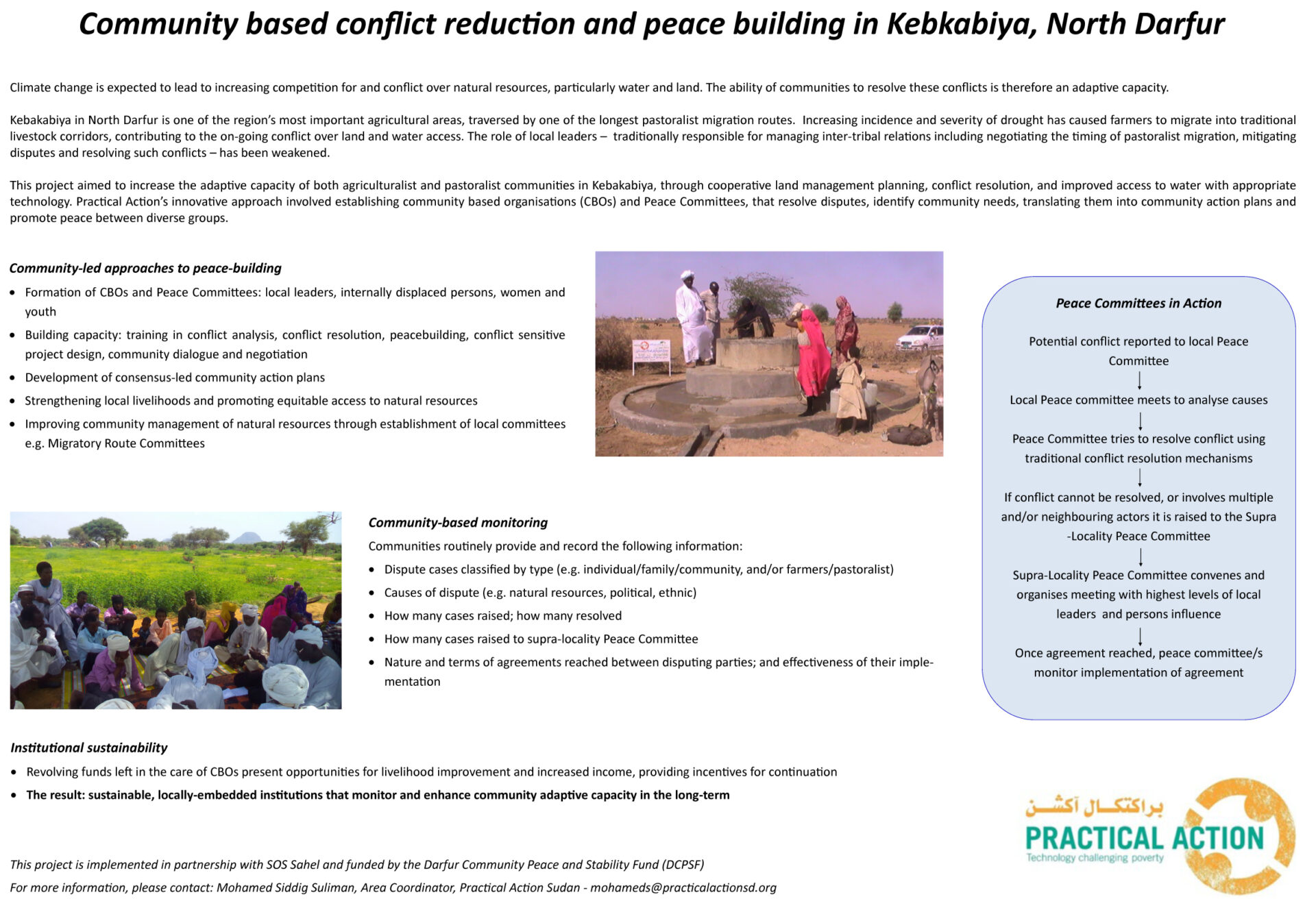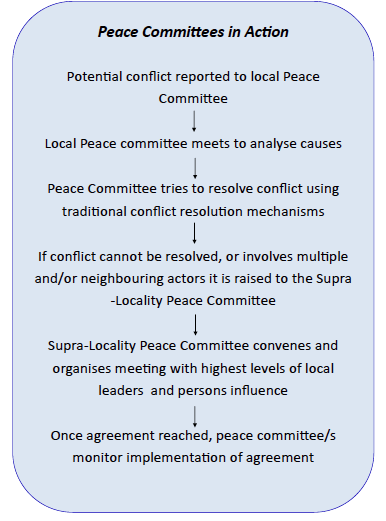Community based conflict reduction and peace building in Kebkabiya, North Darfur

The 9th International Conference on Community-Based Adaptation (CBA9) took place in Nairobi, Kenya, from April 24-30 2015. The CBA series of conferences focus on the latest developments in community-based adaptation to climate change. The theme of this year’s event was “Measuring and enhancing effective adaptation”, and all the posters presented at the conference were summaries of projects related to the conference theme. This poster is one of the posters featured at the conferance. For more information about CBA9, visit: www.cba9.org. If you want to learn more about community based adaptation, please visit the GICBA platform on weADAPT.
Introduction
Climate change is expected to lead to increasing competition for and conflict over natural resources, particularly water and land. The ability of communities to resolve these conflicts is therefore an adaptive capacity.
Kebakabiya in North Darfur is one of the region’s most important agricultural areas, traversed by one of the longest pastoralist migration routes. Increasing incidence and severity of drought has caused farmers to migrate into traditional livestock corridors, contributing to the on-going conflict over land and water access. The role of local leaders – traditionally responsible for managing inter-tribal relations including negotiating the timing of pastoralist migration, mitigating disputes and resolving such conflicts – has been weakened.
The project aimed to increase the adaptive capacity of both agriculturalist and pastoralist communities in Kebakabiya, through cooperative land management planning, conflict resolution, and improved access to water with appropriate technology. Practical Action’s innovative approach involved establishing community based organisations (CBOs) and Peace Committees, that resolve disputes, identify community needs, translating them into community action plans and promote peace between diverse groups.
Community-led Approaches to Peace-building
– Formation of CBOs and Peace Committees: local leaders, internally displaced persons, women and youth
– Building capacity: training in conflict analysis, conflict resolution, peacebuilding, conflict sensitive project design, community dialogue and negotiation
– Development of consensus-led community action plans
– Strengthening local livelihoods and promoting equitable access to natural resources
– Improving community management of natural resources through establishment of local committees e.g. Migratory Route Committees

Community-based Monitoring
Communities routinely provide and record the following information: – Dispute cases classified by type (e.g. individual/family/community, and/or farmers/pastoralist)
– Causes of dispute (e.g. natural resources, political, ethnic)
– How many cases raised; how many resolved
– How many cases raised to supra-locality Peace Committee
– Nature and terms of agreements reached between disputing parties; and effectiveness of their imple-mentation
Institutional Sustainability
– Revolving funds left in the care of CBOs present opportunities for livelihood improvement and increased income, providing incentives for continuation
– The result: sustainable, locally-embedded institutions that monitor and enhance community adaptive capacity in the long-term.
Contact:
This poster was designed and produced by Mohamed Siddig Suliman, Practical Action Sudan.
(0) Comments
There is no content